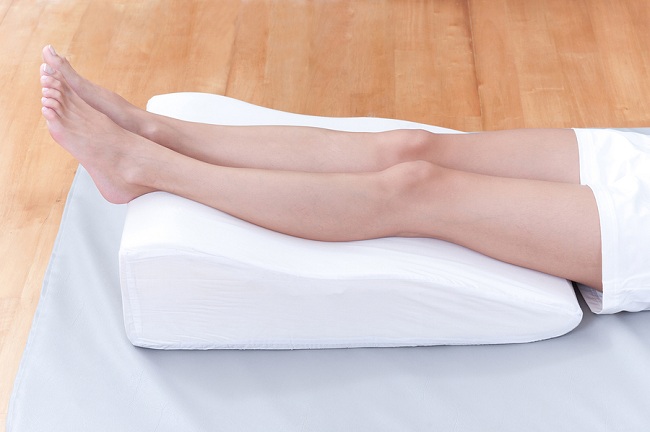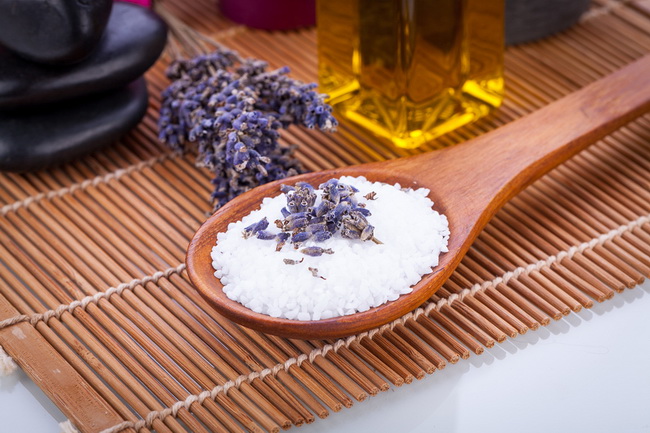- Make It Yourself Lavender Heart-Shaped Bath Bombs!
- 20 Things You Never Knew About “Down There”
- 12 Best Foods For Those Suffering From Arthritis Pain
- 12 Personal Hygiene Mistakes Almost Everyone Makes (Mom Never Told You About #4!)
- 15 Medicinal Plants And Herbs From The Cherokee People
- 12 Mind-Blowing Benefits Of Drinking Coconut Water During Pregnancy
- 12 Outstanding Winter Foods That Won’t Fatten You Up Like A Christmas Turkey
12 Natural Ways To Stop Restless Leg Syndrome (You Won’t Believe #5!)

Photo credit: bigstock.com
Do you or does someone in your family have restless leg syndrome? You might have this annoying problem and not even know it. Restless leg syndrome, also called Willis-Ekborn Disease, is a common neurological disorder that affects untold millions of Americans each year. Those who suffer from restless leg syndrome have pains, aches, or sensations like they must move their legs whenever they lie down or when they are sitting down. Your legs feel like they want to move no matter how tired you might be or how sleepy you might be.
This often happens at night, which causes many people to have either difficulty falling asleep or staying asleep. This can interrupt your quality of life as you don’t get the restful sleep you need. Restless leg syndrome, RLS, occurs more often in women than in men, and although it can happen to anyone at any age, it tends to affect adults more often than teenagers or younger children.
Although the symptoms of RLS can vary in severity and in duration for each person, one thing remains the same; the need to move your legs whenever you lie or sit down. Some people have mild symptoms intermittently, other have more severe episodes. This problem commonly becomes worse with age.
Researchers do not fully understand RLS but they do know that there is some connection to your lifestyle. Your doctor will prescribe medications but there are also numerous home remedies you can try to keep symptoms at bay without resorting to toxic chemical drugs
The following 12 remedies might take a bit longer to work than prescription drugs and not every remedy works for every person, but all of the following remedies are natural and non-toxic.
1. Exercise
According to the Willis-Ekborn Disease Foundation, one of the most effective remedies for those affected by this disease is to get a minimum of 30 minutes of regular exercise each day. Those who get regular exercise report having fewer episodes, less fatigue, and better sleep than those who do not. You don’t need to do intense exercise, just any type of exercise that involves the legs such as jogging, walking, swimming, dancing or bike riding. Yoga in particular has been shown to be very helpful for those with RLS. The Journal of Alternative and Complementary Medicine recently published a study finding that women who were affected by restless leg syndrome had fewer symptoms and less stress when they practiced yoga five days each week.
2. Apple Cider Vinegar
You might be wondering how something as simple as apple cider vinegar can help with RLS. Apple cider vinegar balances the pH level of the body as well as improves the absorption of nutrients. The best way to utilize apple cider vinegar is to add about a tablespoon of it to a glass of water (add some honey to help improve the flavor) and sip it slowly over about a half hour period before bedtime. Do this each night before bed. If you simply cannot bear the taste, you can always take apple cider vinegar tablets, but you will need to speak to your doctor about the proper dosage for your unique situation. You can also try rubbing a small amount of apple cider vinegar on your legs each night before bedtime.
3. Stop Smoking
If you are a smoker, you already know about all the cancer risks that come with smoking, but smoking can also have a negative impact on RLS. Smoking makes you feel jittery and has a negative impact on sleep. It also impedes circulation, which can negatively affect the legs. Quitting is your best choice but if you aren’t ready or if you are having a difficult time quitting, at least cut back, especially before bedtime.
Continue to Page 2

Photo credit: bigstock.com
4. Hot and Cold Foot Soak
For the reduction of legs cramps and for easing the pain that comes with RLS, you can try alternating hot and cold soaks of your feet and/or legs. To use this method, fill two large buckets, one with hot water (not boiling hot, but comfortably hot) and one with cold water. Put both of your feet in the bucket of cold water for three minutes, then put them in the bucket filled with hot water for three minutes. Repeat this three or four times, ending with the hot water. Try this method each night about one hour before bed.
5. Lavender Oil
Everyone loves the sweet scent of lavender, and now that you know it can help with RLS, you won’t be able to stop using this wonderfully healing scent everywhere! Lavender will calm the body, which will relax the legs and help you to sleep better. Simply rub a few drops of lavender oil on the bottom of your feet each night before you hop into bed. You can also add a few drops of lavender essential oil to a warm bath and enjoy this before bed. Many people find that putting a few drops of lavender oil on a cotton ball and slipping it into your pillowcase or putting a lavender sachet in your pillowcase helps to encourage deep, restful sleep.
6. Black Strap Molasses
Rich in iron, black strap molasses is thought to help the various symptoms of RLS. Iron is an integral component of our red blood cells. Iron transports oxygen from the lungs to every single cell in the body. Without sufficient amounts of iron, the body feels fatigued, weak, and the metabolism is lower. Black strap molasses contains important minerals such as potassium and calcium. If you have trouble finding this type of molasses at your local store, you can usually find it in most natural or health food stores. To use this method, add one tablespoon of black strap molasses to one cup of water and drink each night about 30 minutes before bedtime. You might want to try mixing one tablespoon of apple cider vinegar and black strap molasses in a glass of water. The molasses will help to ease the taste of the apple cider vinegar.
Continue to Page 3

Photo credit: bigstock.com
7. Peppermint
Peppermint contains a high level of a compound called menthol. Menthol numbs those restless feelings in your legs and provides mild and soothing pain relief. You can try drinking a cup of peppermint tea each night about 30 minutes before bed to help the muscles to relax as well as encourage more restful sleep. Peppermint tea has numerous other health benefits in addition to helping RLS. Try drinking three or four cups each day if you really enjoy it. You can also try rubbing some peppermint oil directly on the legs and gently massaging it in each night for five minutes or so before you hit the hay. This helps to relieve muscle tension.
8. Epsom Salt
Epsom salt really isn’t salt at all but flakes of magnesium. Soaking in a hot bath that contains Epsom salts can help to ease sore muscles and calm the nerves. Depending on the size of your tub, you can add between one and two cups of Epsom salts to your bathwater and soak for 20 to 30 minutes each night about one hour before bedtime. Be sure that the water isn’t too hot!
9. Chamomile
This extremely popular herb is a very mild sedative that relaxes both the mind and body. Consuming chamomile tea on a regular basis can also encourage sound sleep and calm the symptoms of RLS. Enjoy a cup of chamomile tea an hour before bedtime to relieve muscle tension and lower stress levels. You can also try massaging your legs each night with chamomile essential oil for about five minutes just before you go to bed.
Continue to Page 4

Photo credit: bigstock.com
10. Tonic Water
This carbonated type of water naturally contains quinine. Quinine helps to settle the nervous system and often provides much needed relief from the symptoms of RLS. Tonic water acts as a muscle relaxant and improves circulation in the legs. Of course, large doses of quinine can have serious, negative health effects, so you don’t want to consume too much, but most tonic waters have 20 mg of quinine or less per an 8 ounce serving, so you should be perfectly safe drinking small amounts. Try just ¼ cup of tonic water each evening about an hour before bedtime. Sip on it slowly so your body has ample time to absorb the quinine. If this does not provide relief, try ½ cup each night. Never consume more than eight ounces (one cup) of tonic water without speaking to your doctor first.
11. Coconut Oil
For many people, coconut oil has been reported as being an effective treatment for RLS. This is most likely because it improves overall blood circulation, which can help to relax the nerves and muscles. To use coconut oil, slightly warm (don’t let it get too hot!) about two tablespoon of coconut oil and then massage it into your legs each night for about five minutes before bed. If you like, you can also add a few drops of chamomile or lavender oil to the coconut oil for extra calming power.
SEE ALSO: Make Your Own Leg and Foot Anti-Cramp Salve
12. Camphor
Camphor has long been used to improve circulation and relieve inflammation. It can also help those with restless leg syndrome as it contains antispasmodic compounds. Use camphor oil as a massage oil, and rub it into your legs each night before bed. You might feel a tingly sensation, but this is normal, and it will go away in a few minutes. Repeat each night before bed for best results.
Keep in mind that stress plays a role in agitating RLS symptoms. Find ways to limit the amount of stress in your life as well as learning things, such as deep breathing techniques, that can help you learn to manage the stress you cannot remove from your life.
References:
































